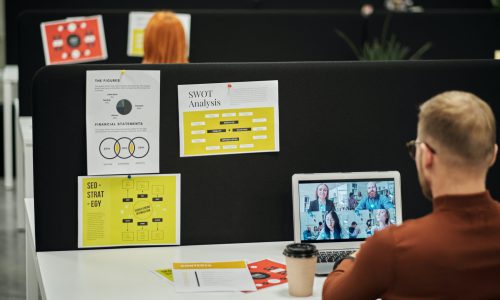National Disability Employment Awareness Month (NDEAM) is a government campaign held annually in October that raises awareness about disability employment issues and celebrates the many contributions of America’s workers with disabilities.
July also marks Disability Pride Month, which initially started as a day of celebration in 1990 — the year that the Americans with Disabilities Act (ADA) went into effect.
To help raise awareness and drive the conversation around eliminating disability discrimination in the workplace, we’re sharing insights and helpful tips on how to make professionals with disabilities feel more welcome in the work environment.
Recognizing the apparent hiring bias
While an increased number of workplaces are aiming to be more inclusive and diverse, there remains an apparent bias when it comes to hiring employees with disabilities. According to the Department of Labor report, “across all age groups, persons with a disability were much less likely to be employed than those with no disability.” Workers with disabilities are also more likely to work part-time versus full-time due to their reduced hours or being unable to find a full-time job.
These statistics are a call for action among employers to become more committed to eliminating any type of discrimination in the workplace, especially when it comes to employees with disabilities.
The challenge is ensuring everyone on the team feels included and valued. Awareness and education are the first steps to identifying these biases.
Making the workplace more inclusive through awareness and education
Educating teams through workshops and training programs is one of the most helpful practices when it comes to increasing inclusivity efforts. During those activities, you can train your managers on how to look for signs that someone’s not being included or welcomed, take the initiative in welcoming them, and encourage their team members to do the same. The Office of Disability Employment Policy (ODEP) suggests contacting local disability organizations to inquire about workplace training programs.
Ensure everyone who walks through the door feels welcome. Encourage leaders to make sure they’re collaborating with team members in today’s hybrid workplace and are fostering open dialogues during meetings, even over Zoom.
A company should make educational materials and information on workplace inclusivity as accessible as possible. Making anti-bias and pro-inclusivity training a mandatory part of everyone’s onboarding process is also important. The ODEP offers more ready-to-use resources (from informational posters and pamphlets to guidebooks and online training modules) for workplaces to implement here.
When it comes to interviewing practices, virtual interviews can be especially helpful and considerate. Companies should try and accommodate remote interviews during the initial stages of the hiring process. If the workplace isn’t easily accessible, the company can provide the option of working remotely, especially if the position doesn’t directly require the employee to be in-office at all times. It’s also important to make sure that the language in job descriptions do not dissuade candidates with disabilities from applying.
Companies should also have an Employee Assistance Program (EAP), a free service that comes with Professional Employer Organizations (PEO’s), such as ADP Totalsource, where an employee can request counseling. Since disabilities aren’t always physical, being able to offer your employees free psychological counseling is very important.
Studies show that employees with disabilities contribute certain qualities to the team that other employees might lack or have underdeveloped. The report by consultancy EY provides a look into the future dominated by computers and suggests that dyslexic workers, for example, will prove to have skills valuable to highly automated work environments.
Empathy, leadership, creative thinking, ability to build relationships, and innovative idea generation and problem-solving are a handful of the skills that rank high when it comes to individuals with dyslexia, and these are the skills that will be in higher demand in future work environments, according to CNBC and the EY report.
“Dyslexic thinkers are often able to see connections that others may miss and create narratives that can simplify complex products or tasks,” said Steve Hatch, vice president at Facebook Northern Europe, in the EY report.
Learn more about accommodating disability in the workplace and educating your team here.
ForceBrands offers end-to-end hiring solutions for all stages of growth. Whether you’re just starting to hire or are looking for the next step in your career, we’re here to help you be a positive Force that makes an impact.







